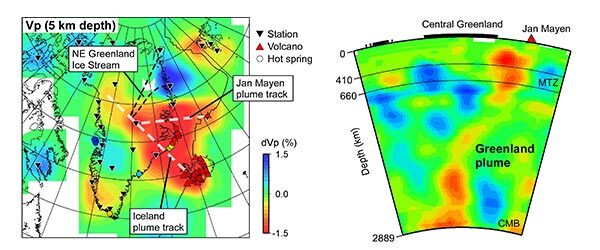
"Newly Discovered Greenland Hot Rock Mantle Plume Drives Thermal Activities in the Arctic," reads the title.
"A team of researchers discovered a flow of hot rocks, known as a mantle plume, rising from the core-mantle boundary beneath central Greenland that melts the ice from below (emphasis added).
"The results of their two-part study were published in the Journal of Geophysical Research.
"Knowledge about the Greenland plume will bolster our understanding of volcanic activities in these regions and the problematic issue of global sea-level rising caused by the melting of the Greenland ice sheet," said Dr. Genti Toyokuni, co-author of the studies.
"The North Atlantic region is awash with geothermal activity (emphasis added). Iceland and Jan Mayen contain active volcanoes with their own distinct mantle plumes, whilst Svalbard — a Norwegian archipelago in the Arctic Ocean — is a geothermal area.
Toyokuni was able to utilize seismographs he installed on the Greenland ice sheet as part of the Greenland Ice Sheet Monitoring Network. Set up in 2009, the project sees the collaboration of researchers from 11 countries. The US-Japan joint team is primarily responsible for the construction and maintenance of the three seismic stations on the ice sheet.
Thanks to Bill Sellers for this link.



Comment: Also relevant: Earth's hot core, not global warming, responsible for Greenland's melting ice sheet